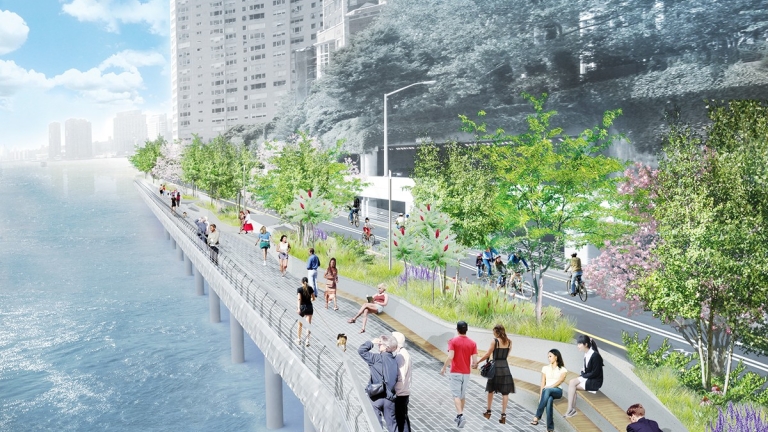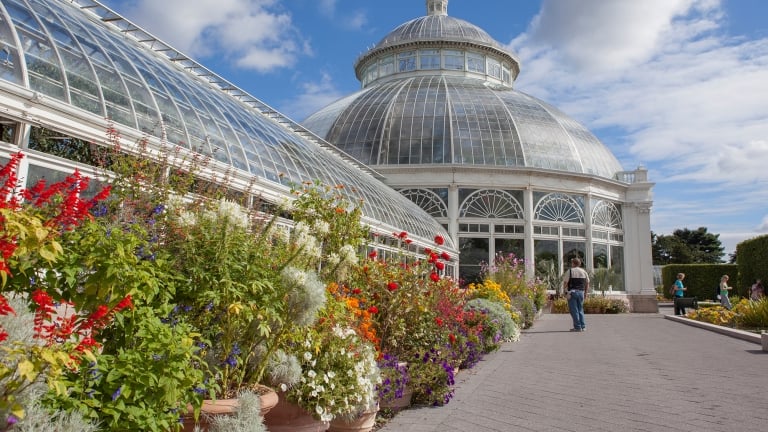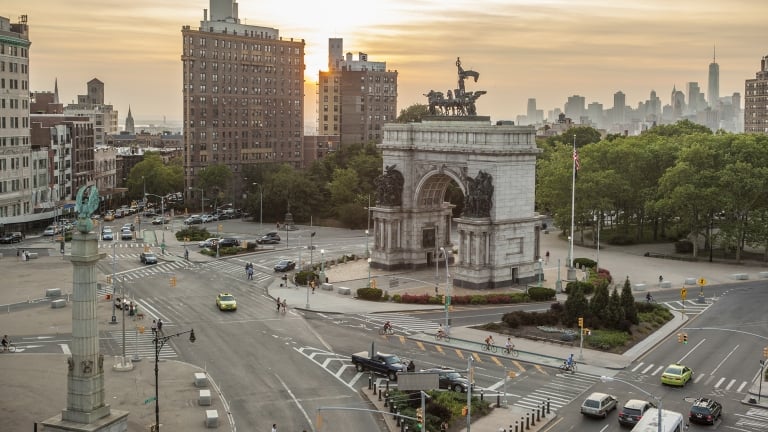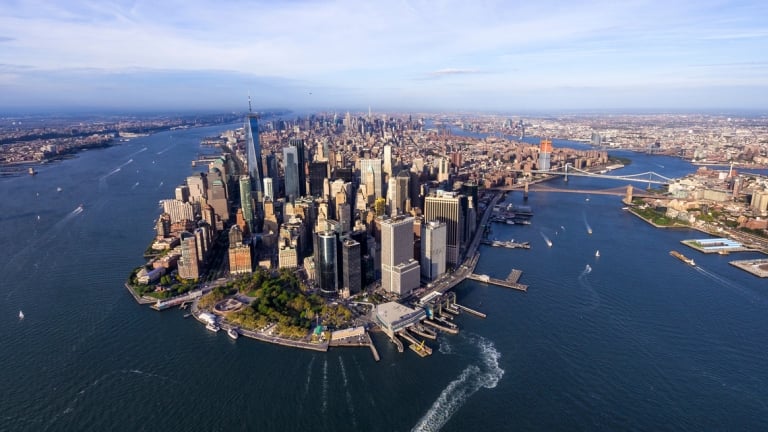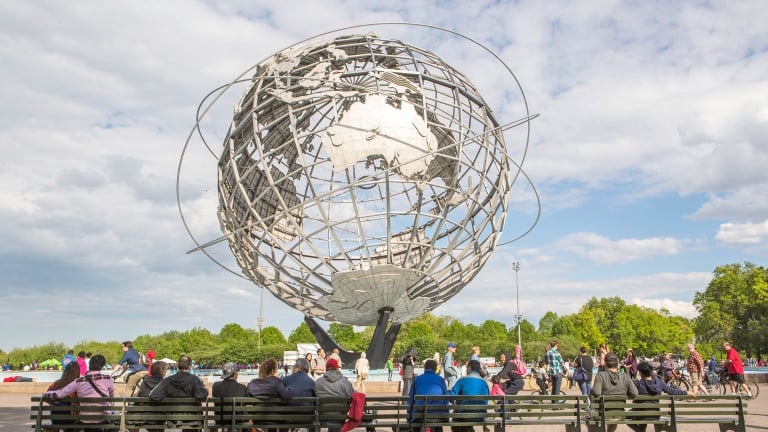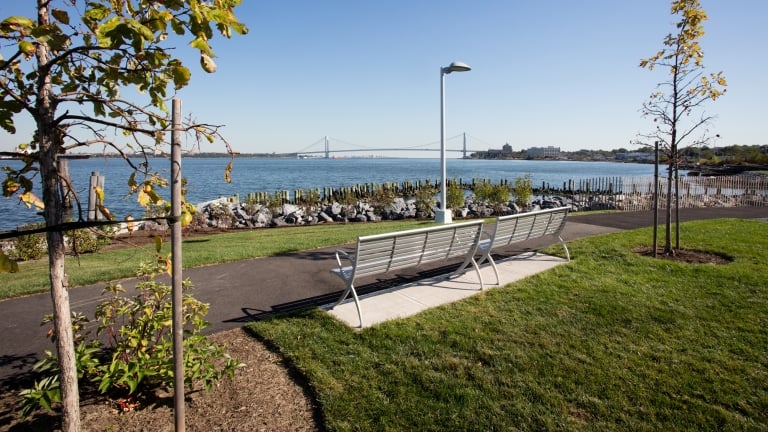Milestone
1.3B+
The amount committed to quality open space that integrates the Manhattan Waterfront Greenway in Inwood, North Harlem, East Harlem, East Midtown and Lower East Side.

The Manhattan Waterfront Greenway is an important open space resource for the city, providing access to the shoreline for a variety of activities, integrating larger parks within a connected network, and providing a bike path for recreation and commuting. This is an opportunity to create public open space, providing residents in some of Manhattan’s most densely populated neighborhoods with improved access to the city’s waterfront. When complete, the 32.5-mile Greenway loop will connect a network of green spaces totaling more than 1,000 acres—a space larger than Central Park—running continuously around the entire island. Joggers, walkers, cyclists, and people of varying ages and abilities from every neighborhood should have access to the Greenway that is designed within the context of each unique neighborhood.
The amount committed to quality open space that integrates the Manhattan Waterfront Greenway in Inwood, North Harlem, East Harlem, East Midtown and Lower East Side.
The City has made historic investments to close the Manhattan Waterfront Greenway loop, committing more than $1.3B to quality open space that integrates the Greenway into Inwood, North Harlem, East Harlem, East Midtown, and Lower East Side; This includes $723M committed in Spring 2021 to close four of these gaps, located in Inwood, North Harlem, East Midtown, and Lower East Side, by the end of the decade. Most of these gaps are in low-income neighborhoods historically cut off from the waterfront.
Manhattan’s geography and historical land uses have made completion of the Manhattan Waterfront Greenway challenging. Consideration of sea level rise and valuable habitats also demand that we are creative and resilient in our future Manhattan Waterfront Greenway designs. Each location has its own unique needs. We look forward to engaging with each community throughout the design process.
Stay Informed: Please fill out our short form to stay up to date on the Manhattan Waterfront Greenway projects and ways to get involved.
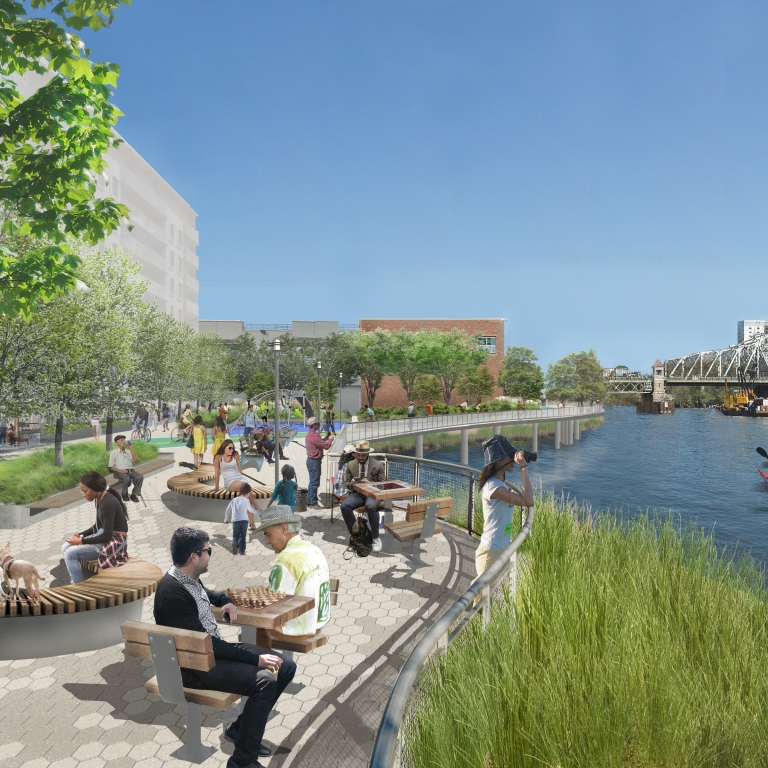
The vision of “closing the loop” is guided by four principles:
NYCEDC is leading the planning, design, and construction for major portions of the Manhattan Waterfront Greenway.
NYCEDC completed the construction of East Midtown Greenway and Andrew Haswell Green Park Phase 2B and are about to begin construction for the Manhattan Greenway - Harlem River project in East Harlem (E 125th – E 132nd Streets).
NYCEDC is leading planning, design and construction for three gaps in Inwood (Sherman Creek waterfront), North Harlem (E 145th – E 163rd Streets), and UN Esplanade in East Midtown (E 41st – E 53rd Streets), in close collaboration with DOT and Parks. We look forward to engaging with communities through the design and development process.
NYCEDC is also working in partnership with the NYC Department of Parks & Recreation to rehabilitate, reconstruct, and improve the section of the Bobby Wagner Walk, an existing Manhattan Waterfront Greenway segment, between 94th and 107th Streets and 117th and 124th Streets, including the pier at East 107th Street. Read more about this project.
The following provides a view into what a completed Greenway might look like, with recommendations for all gaps and upgrade areas. As the projects advance, there will be ongoing public engagement in all phases of design and development.
